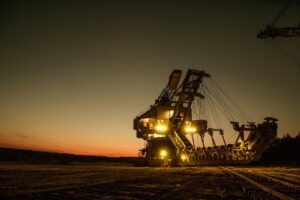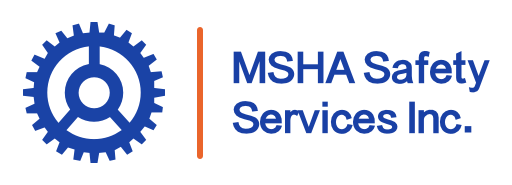The safety and well-being of miners have always been a priority of the U.S. government, with the Mine Safety and Health Administration (MSHA) leading these efforts. Through a combination of stringent regulations, regular inspections, and educational initiatives, MSHA has played a pivotal role in reducing fatalities and injuries in the mining industry. Today, MSHA continues to evolve its safety protocols, adapting to technological advancements in mining practices and emerging health risks. From improving emergency response plans to addressing miners’ mental health, MSHA’s comprehensive approach remains a cornerstone of worker protection.
What Are The Key Regulations Established By MSHA That Directly Impact Miner Safety?
The Mine Safety and Health Administration has developed a comprehensive set of regulations to ensure miner safety. These include rules on ventilation, dust control, noise exposure, and safe equipment practices. The Mine Improvement and New Emergency Response Act (MINER Act) of 2006 further strengthened these regulations by mandating more stringent safety protocols and better emergency response plans.
How Does MSHA Protect Miners Today?
MSHA plays a multifaceted role in ensuring the safety and well-being of miners through various approaches:
- Create Safety Standards: MSHA continuously updates and maintains a robust framework of safety standards that cover everything from machine operation to handling hazardous materials. This helps prevent accidents and injuries in mines.
- Regular Inspections: MSHA conducts scheduled and surprise inspections to monitor compliance with its safety standards. Regular inspections are crucial in identifying hazards before they result in accidents.
- Training and Education: MSHA provides training programs designed to educate miners and supervisors on best practices, proper equipment use, and emergency response. This training ensures that miners are knowledgeable and prepared for potential risks.
- Health Monitoring: MSHA enforces measures to monitor miners’ exposure to harmful substances like silica and coal dust. Through consistent health checks, they help prevent chronic illnesses such as black lung disease.
- Accident Reporting: MSHA requires the prompt reporting of mining accidents and maintains a database to identify trends and develop preventive measures. This transparency helps in creating industry-wide safety improvements.
- Public Awareness: MSHA promotes public awareness campaigns focusing on miner safety and health, making information accessible to both miners and mine operators.
- Enforcement Actions: In cases of non-compliance, MSHA takes enforcement actions, ranging from fines to mine shutdowns. These actions act as deterrents to ensure that mining operations prioritize safety.
- Collaborative Efforts: MSHA collaborates with industry leaders and unions to create a culture of safety, incorporating feedback and innovative ideas to improve regulations and practices.
How Does MSHA Enforce Compliance With Safety Regulations In Mines?
MSHA enforces compliance through a series of proactive measures. Regular inspections, as well as unannounced spot checks, play a key role in holding mining operations accountable. When violations are found, MSHA issues citations, which may carry fines or lead to operational stoppages until compliance is restored. Additionally, MSHA collaborates with legal and health bodies to ensure thorough enforcement of safety regulations.
In What Ways Have MSHA Regulations Evolved In Response To Advancements In Mining Technology?
As mining technology advances, MSHA adapts its regulations to ensure new methods and machinery are used safely. This includes updates to standards for automated machinery, remote-control equipment, and enhanced monitoring systems. By integrating technological advancements into its guidelines, MSHA helps protect miners from new risks associated with cutting-edge mining operations.
What Role Do Training And Education Play In MSHA’s Approach To Miner Safety?
Training and education are foundational to MSHA’s approach. The administration provides comprehensive training modules that cover everything from basic safety measures to advanced emergency response techniques. These educational programs are designed to instill a culture of safety and ensure miners are prepared to handle unexpected challenges.
How Does MSHA Address The Mental Health And Well-Being Of Miners In Its Regulations?
Recognizing the importance of mental health, MSHA has incorporated psychological well-being into its regulatory approach. This includes training programs focused on stress management and mental resilience. Additionally, MSHA collaborates with health organizations to provide resources that help miners cope with the demanding nature of their work.
How Does MSHA Collaborate With Mining Companies To Promote Safety Beyond Regulatory Compliance?
MSHA encourages a cooperative approach with mining companies by organizing joint workshops, training programs, and regular consultations. This collaboration helps mine operators not only meet regulatory standards but also adopt best practices that go beyond compliance. MSHA’s partnership with companies fosters innovation and the development of new safety solutions.
What Impact Do MSHA Regulations Have On Accident Rates And Fatalities In The Mining Industry Today?
Over the years, MSHA regulations have contributed to a significant reduction in mining-related accidents and fatalities. The combination of stringent rules, proactive enforcement, and continuous education has led to safer working environments and heightened awareness among miners and operators.
How Does MSHA Handle Violations?
When a violation is identified, MSHA issues citations based on the severity and potential impact of the infraction. Penalties may include fines, mandatory safety training, or suspension of operations until the violation is addressed. For repeated or serious violations, MSHA can escalate enforcement actions to legal proceedings to ensure compliance.
What Resources Does MSHA Provide To Miners And Operators To Help Them Understand And Implement Safety Regulations?
MSHA provides a wealth of resources, including online guides, training materials, and safety workshops, to educate miners and operators. These resources make it easier to understand complex regulations and implement effective safety measures.
What Challenges Does MSHA Face In Ensuring Compliance And Safety In The Mining Industry?
MSHA faces several challenges, including resistance to change from long-established operations, limited funding, and the complexity of keeping up with technological advancements. Additionally, remote and small-scale mines may lack the resources to implement safety measures promptly, creating challenges in achieving uniform compliance across the industry.

MSHA Safety Services: An Additional Resource
MSHA Safety Services plays a crucial role in protecting miners by offering comprehensive training and safety courses tailored to the unique hazards of the mining industry. Through our wide range of programs, such as miner certification and compliance training, MSHA Safety Services equips workers with the knowledge and skills needed to identify and mitigate risks in the workplace. These courses cover essential topics like hazard recognition, emergency response, and equipment safety, all of which are key to reducing accidents and fatalities. By ensuring miners are well-informed and properly trained, MSHA Safety Services helps foster a safer work environment and supports regulatory compliance with the Mine Safety and Health Administration standards, ultimately safeguarding both the health and lives of those in the mining industry.
The Ongoing Commitment to Miner Safety Through MSHA Regulations
The continued evolution and enforcement of MSHA regulations reflect a strong commitment to miner safety. By adapting to technological changes, promoting training, and collaborating with industry partners, MSHA ensures that miners remain protected in an ever-evolving work environment. The comprehensive approach taken by MSHA highlights the importance of proactive measures, ongoing education, and strict enforcement to foster a safer mining industry.

